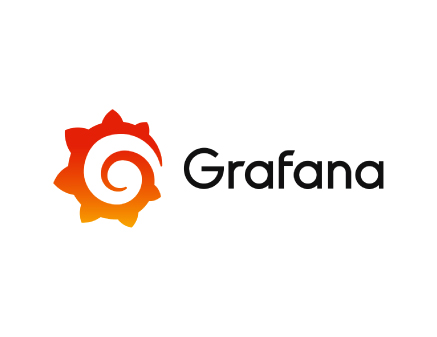Grafana is powerful observability & monitoring tool With its intuitive interface and extensive plugin ecosystem, Grafana empowers organizations to gain valuable insights, monitor key metrics, and make data-driven decisions. Whether you're monitoring infrastructure, analyzing application performance, or visualizing business metrics, Grafana provides a flexible and user-friendly solution for displaying data in a visually appealing and actionable manner.
Products
Grafana Open Source
It provides a feature-rich platform for data visualization, monitoring, and analytics. Users can create and share interactive dashboards, query and visualize data from various sources, and leverage a vast ecosystem of community-developed plugins.
Grafana Tempo
Tempo is a distributed tracing system designed for Grafana Cloud. It enables users to capture, store, and analyze traces to gain insights into application performance and latency. Tempo integrates seamlessly with Grafana, allowing users to visualize and explore traces alongside other metrics and logs.
Grafana Cloud
Grafana Cloud is a fully managed platform that combines Grafana's visualization and monitoring capabilities with scalable infrastructure. It offers hosted Grafana for creating dashboards, Prometheus-based metrics collection and monitoring, and Loki for log aggregation and analysis. Grafana Cloud simplifies the setup, maintenance, and scaling of Grafana and related components.
Grafana Enterprise
Grafana Enterprise builds upon the open-source version with additional features tailored for enterprise environments. It includes advanced security capabilities, such as LDAP and SAML integration, role-based access control, and audit logging. It also offers enterprise-level support and SLAs to ensure the reliability and scalability of the Grafana deployment.
Grafana Loki
Loki is a log aggregation system that allows users to collect, store, and search logs for troubleshooting and observability purposes. It is designed to be highly scalable and cost-effective, utilizing efficient indexing and storage mechanisms. Loki integrates tightly with Grafana, enabling users to visualize and correlate logs with metrics on the same dashboard.
Unique features of Grafana
- Application Performance Monitoring : Integrating data from monitoring tools, log files, and user feedback helps IT teams gain insights into the performance of software applications. It enables the identification of performance bottlenecks, troubleshooting of issues, and optimization of application performance to deliver a seamless user experience.
- IT Infrastructure Management : Integrating data from incident management systems, event logs, and monitoring tools helps IT teams analyze incidents and problems in a coordinated manner. It enables the identification of root causes, correlation of events, and implementation of preventive measures to minimize future disruptions.
- Incident and Problem Management : Integrating data from incident management systems, event logs, and monitoring tools helps IT teams analyze incidents and problems in a coordinated manner. It enables the identification of root causes, correlation of events, and implementation of preventive measures to minimize future disruptions.
- Service Level Agreement (SLA) Monitoring : Integrating data from service desk systems, SLA metrics, and performance monitoring tools enables organizations to monitor and report on SLA compliance. It helps track service delivery, identify areas of improvement, and ensure that customer expectations are met.
- Security and Threat Management : Integrating data from security information and event management (SIEM) systems, intrusion detection systems, and vulnerability scanners provides a unified view of security threats and vulnerabilities. It enables proactive threat detection, incident response, and the implementation of security controls to protect IT assets.
- Resource Planning and Allocation : Integrating data from resource management systems, project management tools, and timesheets helps organizations effectively plan and allocate resources. It provides visibility into resource availability, utilization, and allocation across projects, enabling optimal resource allocation and project planning.
- Customer Relationship Management (CRM) and Sales Analytics : Integrating data from CRM systems, sales pipelines, and customer interactions allows organizations to gain a holistic view of customer relationships and sales performance. It facilitates analysis of customer behavior, identification of upselling opportunities, and improvement of sales strategies.
- DevOps and Continuous Integration/Continuous Deployment (CI/CD):Integrating data from development tools, source code repositories, build systems, and deployment platforms helps organizations achieve an integrated view of the DevOps lifecycle. It enables teams to track code changes, build statuses, and deployment metrics, facilitating faster delivery and efficient collaboration.

